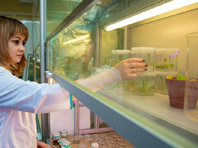Журнал "Медицинский совет" №7, 2020г.
DOI: 10.21518/2079-701X-2020-7-130-136




Гипогликемический синдром (ГГС) – это значительное снижение глюкозы в крови, проявляющееся неврологическими симптомами и купирующееся введением глюкозы. Среди многочисленных причин ГГС особое место занимает артифициальный ГГС как один из вариантов синдрома Мюнхгаузена. Гипогликемия в таких случаях достигается намеренным введением сахароснижающих лекарственных средств. Наиболее часто используются производные сульфонилмочевины, которые являются доступными, недорогими и легальными медикаментами. Ключевую роль в диагностике артифициального ГГС играет тесное сотрудничество клиницистов с лабораторной службой. Так как результаты биохимического и гормонального анализов на фоне гипогликемии при приеме пероральных сахароснижающих препаратов и панкреатогенном ГГС идентичны, проведение дифференциальной диагностики данных состояний возможно только при обнаружении субстанций секретагогов инсулина в крови (или моче).
В России исследование пероральных сахароснижающих лекарственных препаратов при подозрении на их артифициальный прием не внедрено. Артифициальный ГГС, как правило, является диагнозом исключения, и его подтверждение зачастую основано на обнаружении медикаментов среди личных вещей больного, что представляет значительную сложность с учетом норм этики. Однако с 2018 г. в нашем центре при помощи метода высокоэффективной жидкостной хроматографии с тандемной масс-спектрометрией (ВЭЖХ-МС/МС) проводится исследование субстанций 7 пероральных сахароснижающих препаратов в крови пациентов с гиперинсулинемическим ГГС: глибенкламида, гликвидона, гликлазида, глимепирида, глипизида, натеглинида и репаглинида. В данной статье представлен клинический случай приема пациентом без сахарного диабета глибенклами- да и детектирование данного препарата с помощью ВЭЖХ-МС/МС.
Для цитирования: Юкина М.Ю., Нуралиева Н.Ф., Трошина E.А., Иоутси В.А. Клинический случай артифициальной гипогликемии. Медицинский Совет. 2020;(7):130-136. https://doi.org/10.21518/2079-701X-2020-7-130-136
Конфликт интересов: авторы заявляют об отсутствии конфликта интересов.
Clinical case of factitious hypoglycemia




Hypoglycemic syndrome (HGS) is a significant decrease glucose in blood, manifested by neurological symptoms, and stopped by the introduction of glucose. Among the many causes of HGS the special place is taken by the factitious hypoglycemia, as one of the variants of Munchausen syndrome. Hypoglycemia in such cases is achieved by the intentional introduction of hypoglycemic drugs. The most commonly used medications are sulfonylurea derivatives, which are affordable, inexpensive and legal. The close collaboration of clinicians with the laboratory service plays a key role in the diagnosis of factitious hypoglycemia. Since the results of biochemical and hormonal analyzes in patients with hypoglycemia due to reception of oral hypoglycemic medications and pancreatogenous HGS are identical, the only way to differentiate these conditions is by detection of insulin secretagogue substances in the blood (or urine).
The determination of oral hypoglycemic medications in cases of suspicion of artificial reception is not implemented in Russia. Factitious hypoglycemia in most cases is the diagnosis of exclusion, and its confirmation if often based on detection of medications among the personal effects of patient. This is a significant difficulty given the ethical standards. However, since 2018 we conduct in our Centre the determination of 7 oral hypoglycemic medications (glibenclamide, gliquidone, gliclazide, glimepiride, glipizide, nateglinide and repaglinide) in patient’s blood using the liquid chromatography–tandem mass spectrometry (LC-MS). This article presents a clinical case of a patient without diabetes mellitus taking glibenclamide and detection of this drug using highly selective LC-MS.
For citation: Yukina M.Yu., Nuralieva N.F., Troshina E.A., Ioutsi V.A. Clinical case of factitious hypoglycemia. Meditsinskiy sovet = Medical Council. 2020;(7):130-136. (In Russ.) https://doi.org/10.21518/2079-701X-2020-7-130-136
Conflict of interest: The authors declare no conflict of interest.
Загрузить файл в формате PDF
Литература / References
- Kinns H., Housley D., Freedman D.B. Review Article. Munchausen syndrome and factitious disorder: the role of the laboratory in its detection and diagnosis. Ann Clin Biochem. 2013;50(3):194-203. https://doi.org/10.1177/0004563212473280.
- Ameh V., Speak N. Factitious hypoglycaemia in a nondiabetic patient. European Journal of Emergency Medicine. 2008;15(1):59-60. https://doi.org/10.1097/MEJ.0b013e3282aa3f70.
- Юкина М.Ю., Нуралиева Н.Ф., Трошина Е.А., Кузнецов Н.С., Платонова Н.М. Гипогликемический синдром (инсулинома): патогенез, этиология, лабораторная диагностика. Обзор литературы (часть 1). Проблемы эндокринологии. 2017;63(4):245-256. https://doi.org/10.14341/probl2017634245-256.
- Nirantharakumar K., Marshall T., Hodson J. et al. Hypoglycemia in Non-Diabetic In-Patients: Clinical or Criminal? PLoS ONE. 2012;7(7):e40384. https://doi.org/10.1371/journal.pone.0040384.
- Лукьянова И.Ю., Шишкин А.Н., Баранов Д.З. и др. Гипогликемия как про- явление «синдрома Мюнхгаузена»: дифференциальная диагностика (клинический случай). Juvenis scientia. 2017;(1):11-15. Режим доступа: https://www.jscientia.org/2017-1-003.
- Guedes B.V., Acosta C.S., Cabrera F. et al. Factitious Hypoglycemia in Pregnancy in a Patient With Type 2 Diabetes. Obstet Gynecol. 2014;124(2):456-458. https://doi.org/10.1097/AOG.0000000000000138.
- Wazaify M., Abushams L., Van Hout M.C. Abuse of sulfonylureas: Is factitious hypoglycemia a cause for concern? Int J Clin Pharm. 2019;41(1):3-5. https://doi.org/10.1007/s11096-018-0767-9.
- Giurgea I., Ulinski T., Touati G. et al. Factitious Hyperinsulinism Leading to Pancreatectomy: Severe Forms of Munchausen Syndrome by Proxy. Pediatrics. 2005;116(1):e145-e148. https://doi.org/10.1542/peds.2004-2331.
- Cryer P.E., Axelrod L., Grossman A.B. et al. Evaluation and management of adult hypoglycemic disorders: an endocrine society clinical practice guideline. J Clin Endocrinol Metab. 2009;94(3):709-728. https://doi.org/10.1210/jc.2008-1410.
- Agin A., Charrie A., Chikh K. et al. Fast test: clinical practice and interpretation. Ann Endocrinol (Paris). 2013;74(3):174-184. https://doi.org/10.1016/j.ando.2013.05.003.
- Шестакова М.В. Реальная клиническая практика лечения сахарного диабета 2 типа в Российской Федерации по данным открытой проспективной наблюдательной программы «ДИА-КОНТРОЛЬ». Сахарный диабет. 2011;14(4):75-80. https://doi.org/10.14341/2072-0351-5822.
- White J.R. A Brief History of the Development of Diabetes Medications. Diabetes Spectrum. 2014;27(2):82-86. https://doi.org/10.2337/diaspect.27.2.82.
- Глинкина И.В. Производные сульфонилмочевины в лечении сахарного диабета типа 2 на современном этапе. Фарматека. 2009;(12):35-40. Режим доступа: https://lib.medvestnik.ru/apps/lib/assets/uploads/pharmateca/PDF/7561.pdf.
- Yates C., Neoh S., Konpa A., Fullinfaw R., Colman P. Factitious hypoglycaemia. Internal Medicine Journal. 2009;39(12):е15-е16. https://doi.org/10.1111/j.1445-5994.2009.02100.x.
- Hoizey G., Lamiable D., Trenque T. et al. Identification and Quantification of 8 Sulfonylureas with Clinical Toxicology Interest by Liquid Chromatography - Ion-Trap Tandem Mass Spectrometry and Library Searching. Clin Chem. 2005;51(9):1666-1672. https://doi.org/10.1373/clinchem.2005.050864.
- Liang X.R., Dai X.J., Zhang Y.F., Ding J.F., Chen X.Y., Zhong D.F. Liquid chromatography- tandem mass spectrometry simultaneous determination of repaglinide and metformin in human plasma and its application to bioequivalence study. Yao Xue Xue Bao. 2013;48(4):547-553. Available at: https://www.ncbi.nlm.nih.gov/pubmed/23833944.
- Chunduri H.R.B., Dannana G.S. Development and validation of LC-MS/MS method for simultaneous quantification of metformin and nateglinide in human plasma and its application to a pharmacokinetic study. World journal of pharmacy and pharmaceutical sciences. 2016;5(2):651-667. Available at: https://storage.googleapis.com/journal-uploads/wjpps/article_issue/1454137119.pdf.
- Gama R., Teale J.D., Marks V. Best practice No 173: clinical and laboratory investigation of adult spontaneous hypoglycaemia. J Clin Pathol. 2003;56(9):641-646. https://doi.org/10.1136/jcp.56.9.641.
- Jensen R.T., Cadiot G., Brandi M.L. et al. ENETS Consensus Guidelines for the management of patients with digestive neuroendocrine neoplasms: functional pancreatic endocrine tumor syndromes. Neuroendocrinology. 2012;95(2):98-119. Available at: https://www.enets.org/d.f.187.pdf.
- Bem-Chetrit E., Melmed R.N. Recurrent hypoglycaemia in multiple myeloma: a case of Munchausen syndrome by proxy in an elderly patient. Journal of Internal Medicine. 1998;244(2):175-178. https://doi.org/10.1046/j.1365-2796.1998.00325.x.




 1
1 2
2 3
3 4
4


Комментарии (0)